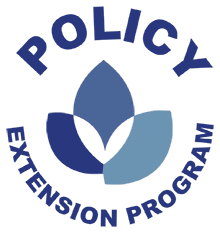The Safe Drinking Water Act (SDWA) is a federal law originally passed in 1974 to ensure the quality of Americans’ drinking water. By regulating the public drinking water supply, public health is also under protection. The standards of drinking water quality are set by the US Environmental Protection Agency (USEPA) to oversee the states, localities, and water suppliers who implement those standards. These standards are used to regulate both naturally occurring and man-‐made contaminants that may be found in drinking water. After being amended in 1986 and 1996, the SDWA now regulates both the drinking water and its sources, including rivers, lakes, reservoirs, springs, and ground water wells. However, the SDWA does not regulate private wells serving fewer than 25 individuals.
Under the SDWA, six groups of water contaminants which may adversely impact public health are regulated by the federal drinking water standards:
- Microorganisms (e.g., bacteria and viruses)
- Disinfectants (e.g., chlorine, chlorine dioxide)
- Disinfection byproducts (e.g., bromate, chlorite)
- Inorganic chemicals (e.g., copper, fluoride, nitrate)
- Organic chemicals (e.g., benzene, dioxin)
- Radionuclides (e.g., alpha particles, uranium).

- Source water protection,
- Operator training,
- Funding for water system improvements, and
- Public information to protect drinking water quality from its source to tap.
“We never know the worth of water till the well is dry.”
Thomas Fuller, Gnomologia, 1732
In addition, various programs were developed by the USEPA based on the SDWA to ensure the quality of drinking water. Therefore, all public water systems should be monitored regularly and comply with all regulations associated with drinking water quality. States and the USEPA maintains a formal enforcement program to ensure that violations are promptly addressed by a formal enforcement authority.
For more information about Safe Drinking Water Act, visit: http://water.epa.gov/lawsregs/rulesregs/sdwa/index.cfm
Conversations to have:
Producers and agricultural business owners should be aware of how the SDWA associated program may influence their business. Information about SDWA associated policies and regulations, local water quality standards, limitations on use of water bodies, and standards related to nutrient and waste management should be identified while making decisions for business management strategies. Alternative farming practices recommended by research and the government should be taken into consideration to enhance the sustainability of water resources.
The general public needs to understand the importance of the SDWA and how the SDWA relates and influences their life and health. They should be aware of their water source and supplier and understand how to minimize waste production. For people who are active in landscapes, they should be aware of the quantity of chemicals they use for landscaping, as well as the ramifications of chemical run off. The BMPs suggested in the SDWA associated programs are approaches that can be applied to properly manage water, fertilizer, and pesticide uses and retain or even improve water resources quality. Additionally, the USEPA also provides opportunities for public involvement to protect drinking water quality.
Decision makers need to know about local water quality standards required by the SDWA in their area and be aware of any change in water quality standards promulgated by the USEPA administrator. They should understand current regulations related to water contaminant management, what science can tell us about water quality, and be aware of public opinion of water issues which provide a broad snapshot of understanding on a complex topic. By understanding both regulatory and scientific facts, as well as public opinions, decision makers will be equipped to take educated action on public policy development.
Important Items
Public water systems: All public water systems must have at least 15 service connections or serve at least 25 people per day for 60 days a year. Public water systems are categorized as community water systems and non-‐community water systems depending upon whether or not the people are served by the system year-‐round or not. In addition, there are two types of non-‐community water systems depending on whether or not the system serves the same people or not throughout the year: non-‐transient non-‐community water system (serves the same people) and transient non-‐community water system (serves the public but not the same individuals).
Sources of contaminants: Contaminants which might impact public health include improperly disposed of chemicals, animal wastes, pesticides, human wastes, wastes injected deep underground, and naturally occurring substances. Under the SDWA, six groups of water contaminants which may adversely impact public health and are regulated by the federal drinking water standards: microorganisms, disinfectant, disinfection byproducts, inorganic chemicals, organic chemical, and radionuclides.
Impacts to public health: Drinking water is directly associated with human health due to daily intake. The impacts of poor drinking water can include acute effects or chronic effects on human health. Any contaminants should be carefully regulated to ensure the quality of drinking water is safe.
Drinking water standards: Drinking water standards are set by the USEPA by first identifying contaminants that may adversely affect public health and occur in drinking water frequently and at levels that pose a threat to public health. A maximum contaminant level will be set by the USEPA to specify the maximum permissible level of a contaminant in drinking water. These levels are enforceable standards, and are set based on the feasibility to manage the contaminants under the set levels.
Best Management Practices: BMPs are the most effective, practical means of preventing or reducing pollution from nonpoint sources.
Water quality monitoring: All water systems should be monitored regularly to ensure the water provided is safe. Each individual water system should submit samples of their water for laboratory testing.
Public Information: All USEPA reports and databases associated with drinking water are open access and the USEPA encourages public involvement in protecting drinking water quality.

